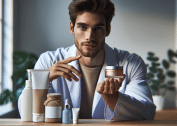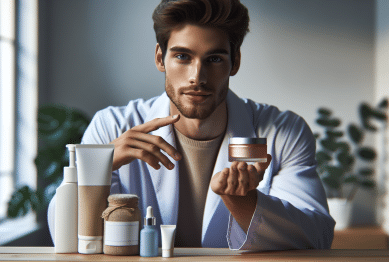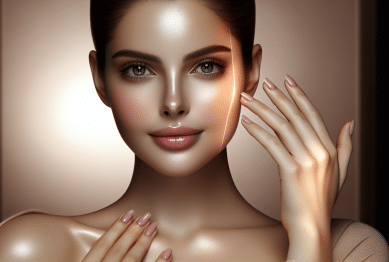Curious about maintaining radiant, youthful skin? This guide explores practical skincare routines, nourishing ingredients, and lifestyle habits that help many achieve a glowing complexion. Uncover how hydration, mindful sun exposure, and science-backed treatments can support your long-term wellness and beauty goals.
Understanding the Foundation of Healthy Skin
When thinking about how to achieve glowing skin, it’s important to start at the source: cellular health and hydration. Skin’s plumpness, elasticity, and bright tone depend largely on water retention within the epidermis. Dehydrated skin can appear dull or flaky, making simple steps like drinking enough water fundamental for a healthier appearance (Source: https://www.ncbi.nlm.nih.gov/pmc/articles/PMC4529263/). Incorporating a quality moisturizer further helps trap moisture, especially when it contains humectants such as hyaluronic acid or glycerin, which are known for their water-attracting properties.
Daily cleansing supports the skin barrier but harsh soaps can disrupt the natural oils. Dermatologists suggest using gentle, pH-balanced cleansers to reduce irritation and avoid stripping essential lipids from the surface (Source: https://www.aad.org/public/everyday-care/skin-care-basics/care/skin-care-basics). These routines protect against environmental damage and help maintain a youthful look over time. For those with sensitive or acne-prone skin, non-comedogenic formulas help reduce breakouts while supporting skin clarity and texture.
An often-overlooked element in healthy skin routines is sleep. During rest, the body initiates repair cycles—boosting collagen and repairing UV-induced damage. Scientists have found that inadequate sleep can manifest as dark circles, increased lines, and overall loss of radiance (Source: https://www.sleepfoundation.org/physical-health/how-sleep-affects-your-skin). By building a calming bedtime routine, some people naturally notice their complexion rebounds, with smoother texture and less noticeable redness or swelling.
The Role of Sun Protection in Aging Well
Sun exposure remains one of the leading contributors to premature aging. Ultraviolet (UV) rays—both UVA and UVB—can penetrate the skin and negatively affect collagen and elastin fibers, leading to sagging and wrinkles. Experts recommend using broad-spectrum sunscreen as part of daily routines—even on cloudy days or when only near windows (Source: https://www.skincancer.org/skin-cancer-prevention/sun-protection/). Opt for SPF 30 or higher for reliable protection, and reapply throughout the day if outdoors for extended periods.
Protective clothing also plays a role in healthy aging. Lightweight long sleeves, wide-brimmed hats, and sunglasses provide a physical barrier from harsh UV rays. These habits can reduce the risks of sunburn and photoaging, creating noticeable differences in skin smoothness and tone over time. Many find that integrating sun-shielding accessories into their wardrobe makes protection effortless and stylish.
Special care is needed for sensitive spots, such as the lips and eyelids. These thin areas are prone to faster sun-induced changes. Targeted products—like lip balms with SPF and mineral sunscreens for eyelids—offer focused defense. Preventive efforts are cumulative, meaning steady protection today can influence skin resilience for years to come.
Unlocking the Power of Nutrient-Rich Diets
Nutrition patterns significantly impact both the texture and glow of skin. Antioxidant-rich foods like berries, leafy greens, nuts, and fish help neutralize free radicals—unstable molecules tied to skin aging and dullness (Source: https://www.hsph.harvard.edu/nutritionsource/antioxidants/). Vitamins C and E, found in citrus and almonds, assist in collagen production and protect against environmental stressors. Consistency with these nutrients supports lasting radiance and firmness.
Omega-3 fatty acids found in fatty fish such as salmon and mackerel, as well as plant sources like flaxseeds, promote skin flexibility and moisture. These nutrients may reduce the appearance of irritation and dryness, according to multiple studies (Source: https://ods.od.nih.gov/factsheets/Omega3FattyAcids-Consumer/). Balancing healthy fats, lean proteins, and fiber-rich carbohydrates sets a strong foundation for vibrant skin.
Some individuals benefit from minimizing high-glycemic foods—like white bread, sweetened drinks, and pastries—which are linked to excess oiliness and occasional blemishes. By choosing whole grains, legumes, and colorful vegetables, it is possible to see steady improvements in clarity and smoothness. Nutrition guides from major health organizations offer detailed meal planning tips for those interested in tailoring a balanced, skin-supporting diet.
Science-Backed Skincare Ingredients Worth Trying
The global skincare market highlights active ingredients with research support. Retinoids—vitamin A derivatives—are frequently cited by dermatologists for their ability to enhance cell turnover and address fine lines. Using retinoids as recommended, typically in evening routines, may gradually reduce visible signs of aging without invasive treatments (Source: https://www.aad.org/public/diseases/a-z/skin-care-products-guide). Beginners often start with gentle formulas before progressing to higher-potency products.
Vitamin C serums are popular for their brightening effects. They work to combat dark spots and uneven pigmentation by suppressing melanin production. Seeking out stabilized, clinically formulated vitamin C serums maximizes their benefits and minimizes irritation. Many users combine vitamin C with sunscreen in morning routines for amplified UV protection and smooth glow.
Ceramides make up the skin’s lipid barrier. Moisturizers containing these molecules help lock in hydration and rebuild resilience, particularly for those with sensitive or mature skin. Advances in biotechnology now allow for the inclusion of plant-derived or synthetic ceramides in many skincare products, making barrier repair accessible for various skin concerns and goals.
Building Consistency into Skincare Habits
No matter how advanced a skincare routine, consistency is essential for visible, sustained results. Morning and evening rituals create structure, protect from environmental stressors, and reinforce healthy behaviors. Cleansing, moisturizing, and sun protection serve as non-negotiable basics, while targeted treatments address unique concerns like dullness or sensitivity. Over weeks and months, commitment to these steps can drive rewarding changes.
Those new to multi-step routines may benefit from keeping things simple at first. A gentle cleanser, lightweight serum, moisturizer, and SPF represent a solid foundation. Once established, additional products—such as exfoliants or specialized masks—can be modeled in based on response and comfort level. Listening to skin, adjusting for seasons, and tracking which steps deliver visible improvements helps fine-tune the regimen for personal needs.
Mistakes are common, such as over-exfoliating or starting too many active ingredients at once. When irritation occurs, pausing and scaling back allows the skin to rebalance. Experienced practitioners suggest that smart patience—watching for gradual results and focusing on preventive care—leads to more sustainable beauty outcomes than chasing overnight miracles or trends.
Lifestyle Shifts to Keep Your Skin Vibrant
Beyond creams and cleansers, everyday habits make a difference in how skin ages. Managing stress plays a crucial role; high stress levels can intensify inflammatory responses and worsen issues such as acne or redness (Source: https://www.psychologytoday.com/us/blog/urban-survival/201801/the-effects-stress-your-skin). Practices like meditation, mindful breathing, or gentle physical activity promote balance and support the body’s natural repair processes.
Regular exercise increases circulatory efficiency, bringing more oxygen and nutrients to skin cells. This process encourages the development of a naturally healthy glow while helping remove toxins. Sleep quality is another non-negotiable, as chronic deprivation reduces immune function and accelerates visible aging. Setting aside even short periods for self-care rituals can encourage both physical renewal and emotional relaxation.
Environmental factors such as air pollution and smoking are major contributors to skin damage. Taking steps to limit exposure by installing air filters, avoiding tobacco, and regularly cleansing the skin after time outdoors can reduce the impact of these stressors. As technology and research progress, people may find individualized solutions that integrate wellness principles and beauty science for a straightforward approach to aging gracefully.
References
1. Barankin, B., & Maibach, H. I. (2017). Moisturizers: The Slippery Road. Retrieved from https://www.ncbi.nlm.nih.gov/pmc/articles/PMC4529263/
2. American Academy of Dermatology. (n.d.). Skin care basics. Retrieved from https://www.aad.org/public/everyday-care/skin-care-basics/care/skin-care-basics
3. National Sleep Foundation. (n.d.). How sleep affects your skin. Retrieved from https://www.sleepfoundation.org/physical-health/how-sleep-affects-your-skin
4. Skin Cancer Foundation. (n.d.). Sun protection. Retrieved from https://www.skincancer.org/skin-cancer-prevention/sun-protection/
5. Harvard T.H. Chan School of Public Health. (n.d.). Antioxidants: Beyond the Hype. Retrieved from https://www.hsph.harvard.edu/nutritionsource/antioxidants/
6. Office of Dietary Supplements. (n.d.). Omega-3 Fatty Acids. Retrieved from https://ods.od.nih.gov/factsheets/Omega3FattyAcids-Consumer/









